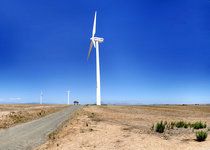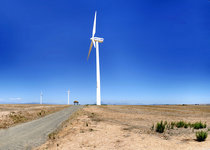US on track to double renewable energy, says Biden
The White House has announced that doubling renewable energy production by 2012 is possible following large-scale green investments.

 The White House announced yesterday that US government investment in green technology has made doubling renewable energy production capacity by 2012 a possibility. There are also hopes that the cost of solar power could be halved by 2015.
The White House announced yesterday that US government investment in green technology has made doubling renewable energy production capacity by 2012 a possibility. There are also hopes that the cost of solar power could be halved by 2015.
During a speech on Tuesday, Vice President Joseph Biden said that stimulus funding together with private investment could lead to breakthroughs in many areas of the renewable energy sector, "The government plants the seeds. The private sector nourishes and makes it grow… And in the process, if we're as innovative as we've been in the past, we launch entire new industries."
In the report, Vice President Biden emphasised the impact the funding has had on innovation in the areas of renewable energy, transportation, broadband, smart electrical grids and medical research.
Obama's Recovery Plan was initially intended to create jobs and promote investment and consumer spending during the recession. Enacted in February 2009, it has so far channelled some $814 billion into the US economy – including more than $100 billion to stimulate science, technology and innovation projects.
In the New Energy for America plan, Obama called for federal investment of $150 billion over the next decade to build a clean energy future. The plan also called for renewable energy to supply 10 per cent of US electricity by 2012, rising to 25 per cent by 2025.
Energy efficiency and renewable energy research and investment have so far seen some $27 billion of investment. This includes $6 billion for renewable energy and electric transmission technologies loan guarantees and $3.4 billion for carbon capture and low emission coal research.
One of the specific goals outlined in the report was the doubling renewable energy capacity from 28.8 gigawatts of solar, wind and geothermal sources installed as of the end of 2008 to 57.6 GW by the end of 2011. This would be enough to power 16.7 million homes, or 55 million electric cars, for a year. A similar aim is to double the level of manufacturing output from 6 GW in 2008 to 12 GW within a similar timeframe.
At the moment, solar and wind energy combined account for less than 3 per cent of the total amount of electricity generated in the US but this could rise considerably once the price of developing such technology lowers. By 2015, the cost of solar power is expected to be on par with common grid electricity while the cost of electric car batteries is set to fall by 70 per cent between 2009 and 2015 and thus be competitive with common car batteries.
In 2009, Barack Obama became the first President to mention energy use in relation to climate change in an inaugural address. He said the US would look to "harness the sun and the winds and the soil to fuel our cars and run our factories."
The government has faced criticism, however, over lack of job creation. A report issued by the nonpartisan Congressional Budget Office in May announced that the Recovery Plan had created some 2.8 million jobs and increased US GDP by up to 4.8 per cent – it was also suggested that this stimulus would peak late 2010 before tapering off in the following years.
Author: Tom Watts | Climate Action
Images: warrenski | Flickr






